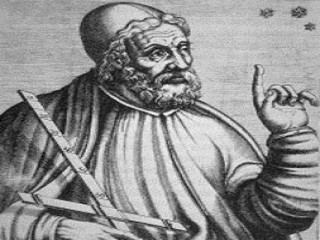
Eudoxus Of Cnidus biography
Date of birth : -
Date of death : -
Birthplace : Cnidus, Ancient Greece
Nationality : Greek
Category : Historian personalities
Last modified : 2011-04-20
Credited as : Astronomer and mathematician, physician, student of Plato
The astronomer, mathematician, and physician Eudoxus of Cnidus (ca. 408-ca. 355 B.C.) was the first Greek astronomer to properly apply mathematics to astronomy.
Eudoxus was born in Cnidus, a Greek colony in Asia Minor, into a family of physicians; he studied at the medical school there. At the age of 23 he went to Athens as an assistant to a doctor. He attended lectures at the Academy, recently founded by Plato. On returning to Cnidus, Eudoxus completed his studies.
A few years later Eudoxus went to Egypt with another doctor. He studied the heavens from an observatory at Heliopolis on the Nile. His astronomical observations appear in his Phaenomena, but apparently this book did not contain theories such as those he was later to expound. The book locates the constellations relative to each other and to imaginary lines on the celestial sphere. Much space is given to a compilation of lists of stars which rise above or fall below the horizon at the beginning of each month.
During Eudoxus' 14 months in Egypt, one of his objectives was to produce a satisfactory calendar. His skill at making the detailed observations required for a good calendar is probably a result of his medical training, for although the teaching of medicine in Eudoxus' time may not have been very strong in the area of cures, it did emphasize the detailed description of symptoms.
On returning to Asia Minor, Eudoxus established his own school in Cyzicus. While here he wrote On Speeds, his most important astronomical work, in which he expounded his theory of the motions of the stars, sun, moon, and planets. The recent discovery of the spherical shape of the earth may have inspired Eudoxus' hypothesis of homocentric planetary spheres. According to this theory, the motion of a planet can be explained by imagining that the planet is attached to the equator of a sphere; this sphere, with the center of the earth as its center, rotates uniformly about its polar axis. The poles are implanted in a second sphere that is concentric with the first; the second sphere also rotates uniformly about its polar axis, which is at a fixed angle to the axis of the first sphere. This relationship continues successively to other spheres.
If the sun, for example, is imagined as fixed on the equator of one sphere, then rotations of the spheres, with appropriate speed and direction, will give the path of the sun. The fixed stars are imagined to be on the largest concentric sphere, which rotates about the polar axis of the earth. Altogether 27 spheres are required to picture the motions of all the important bodies. Although this theory did not explain all the observable planetary motions, it was accurate enough to cause many of Eudoxus' successors to assume that only minor modifications would be needed to make it more accurate.
It is fairly certain that Eudoxus' principal contributions to mathematics were his theory of proportions and his method of exhaustion. Both of these appear in Euclid's collection of geometrical theorems, the Elements, and are fundamental in the work of later mathematicians.
Eudoxus' theory of proportions is concerned with the ratio of magnitudes. One problem in describing the theory is that many of the theorems appear to be very obvious formulas. A typical example is the following (using modern terminology): given the positive numbers a, b, and c, if a is greater than b then a/c is greater than b/c. Only a person who has investigated the not so obvious way in which such simple properties are proved would begin to appreciate the significance of Eudoxus' work. Another source of possible difficulty for the modern reader of Eudoxus' theory of proportions is that, although it was valid for irrational numbers, to the Greeks "numbers" meant the natural numbers. Thus Eudoxus used more general "magnitudes," which were represented by lengths of line segments.
Eudoxus' method of exhaustion was a rigorous way of calculating areas and volumes; it puts him closer to modern mathematics than any of his other works. Archimedes quotes two theorems which were considered to be true before Eudoxus' time but which were first proved by Eudoxus: the volume of a pyramid is one-third the volume of a prism with the same base and height; and the volume of a cone is one-third the volume of a cylinder with the same base and height.
Eudoxus moved next to Athens, but his stay there was short. The rulers of Cnidus had been overthrown and a democracy established. The people sent a request to Eudoxus to write a constitution for a new government. He returned to Cnidus and composed the legislation. He made his home there for the rest of his life, continuing his teaching and establishing an astronomical observatory. He revised some of his earlier writings and composed a description of his travels in seven books entitled Circuit of the Earth.
Eudoxus also had a reputation as a philosopher. According to Aristotle, Eudoxus held pleasure to be the chief good, for all creatures sought it and all attempted to escape its opposite, pain. Also, according to Eudoxus, pleasure was an end in itself and not a relative good. But Eudoxus was not an immoderate hedonist, for Aristotle, who may have known Eudoxus personally, gives a picture of him that is quite the contrary: "His arguments about pleasure carried conviction more on account of the perfection of his character than through their contents. Eudoxus passed indeed for a man of remarkable moderation. Again he did not seem to embrace these arguments as being a friend of pleasure, but because he regarded them as conforming to the truth."
















